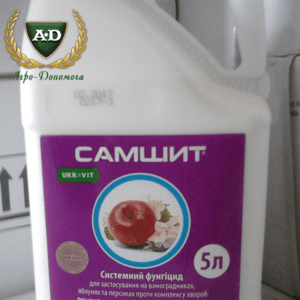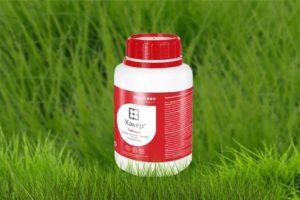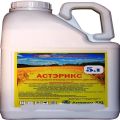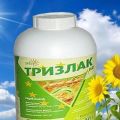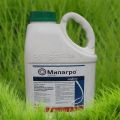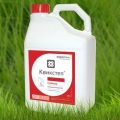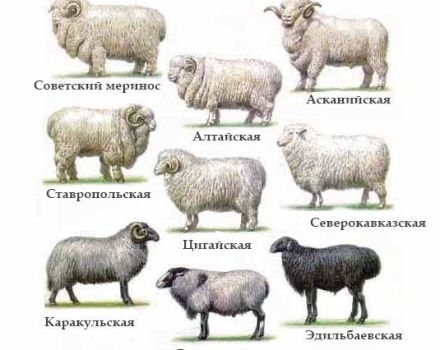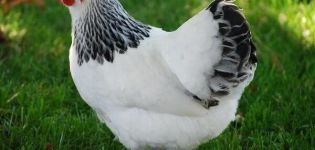Instructions for the use of herbicide Florax, consumption rates and analogues
The herbicide "Florax" is used in agriculture for the destruction of weeds on ear crops. This systemic pesticide has two active ingredients. They have a powerful effect on dicotyledonous weeds found in cereal crops. It is successfully used in fields with wheat, barley, millet, sorghum, corn. It has an effect on almost 150 types of harmful objects - shchiritsa, poppy, wild radish, field chamomile.
Content
- 1 Composition, release form and purpose of the drug "Florax"
- 2 Mechanism of action
- 3 Pros of using
- 4 Consumption rate for different plants
- 5 How to prepare a working solution
- 6 Instructions for the use of the herbicide
- 7 Safety in use
- 8 Drug toxicity
- 9 Compatibility with other pesticides
- 10 Terms and conditions of storage
- 11 Substitutes
Composition, release form and purpose of the drug "Florax"
The combined agrochemical "Florax" consists of two components:
- 2.4 D acid - 550 g / l;
- florasulama - 7.4 g / l.
"Florax" is produced in cans of 5 liters in the form of a suspension concentrate. The herbicide is intended to eliminate harmful vegetation in grain crops. It is also active against overgrown herbs.
Mechanism of action
The active substance florasulam goes deep into the leaves and root system of weeds, thereby inhibiting the synthesis of amino acids. As a result, there is a loss of color, chlorosis of the veins, then the death of the leaf plates.
Acid 2.4 D moves through the aerial parts and causes the cessation of photosynthesis and cell growth, which leads to a change in the shape of plants and rupture of tissues.
After processing, the development and growth of harmful objects slows down in an hour. After 14-21 days, the weeds wither, the leaves curl, the color changes. Plants die completely within 2-3 weeks. The result depends on the rate of application, weather conditions, the sensitivity of the weeds to the preparation, and their height.
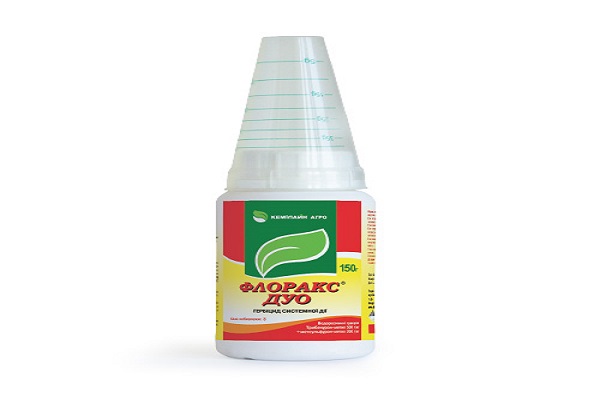
Pros of using
The herbicide has many benefits:
- effective against the types of chamomile, ragweed, sycamore, tenacious bedstraw, black nightshade, sow thistle;
- processing can be done when the air temperature has reached +5 FROM;
- the timing of the introduction of the chemical - from the tillering phase to the second internode;
- acts against overgrown weeds;
- the result appears after 24 hours;
- decomposes in soil quickly, there are no restrictions in crop rotation.
Broad-leaved dicotyledonous grasses are sensitive to the pesticide; it does not harm cultivated plants.
Consumption rate for different plants
The agrochemical is effective against annual and perennial dicotyledonous weeds.
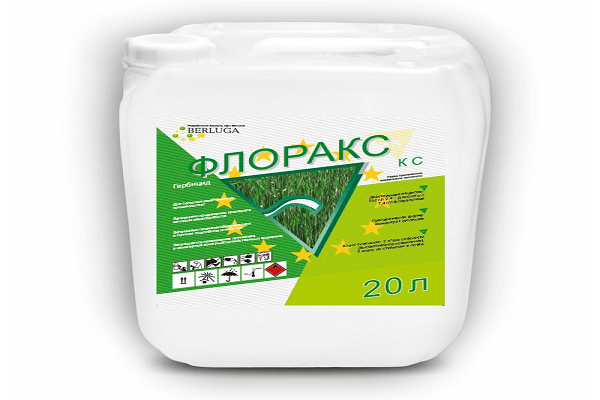
Winter wheat, spring and winter barley
Treatment is done in the tillering phase of the crop and in the early stages of weed growth.The recommended rate is 0.3-0.4 l / ha.
Cereals are sprayed at the rate of 0.5 l / ha, when crops are in the stage of emerging into the tube (1-2 internodes), and weeds are in the early phases. This rate is taken in the case of a large number of tenacious bedstraws and if, due to the weather, the work was not carried out earlier.
Spray winter crops in the spring. Solution required - 200-300 l / ha.
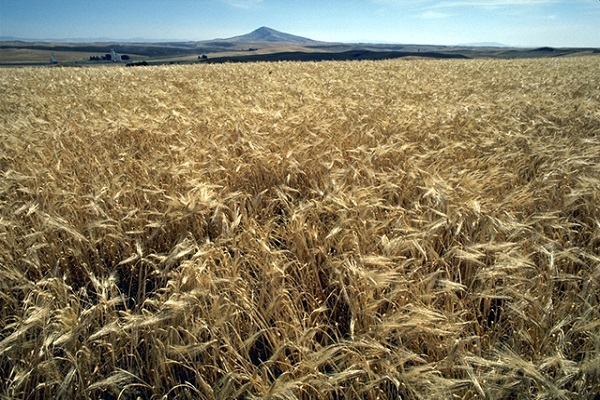
Corn
For corn for grain, oil and silage, take 0.3-0.4 l / ha. They are treated against annuals resistant to 2.4 D acid and perennials. At the same time, crops can be in the 3-5 leaf stage, weeds in the early phase. The volume of the working fluid is 200-300 l / ha.
Millet and sorghum
For millet in the tillering stage from dicotyledonous weeds, both annuals and perennials, in their initial growth phase, 0.3-0.4 l / ha is needed. Required - 200-300 l / ha.
Sorghum is sprayed from all harmful objects in the phase of 3-6 leaves of the crop and the initial growth of weeds, using 0.3-0.4 l / ha. Volume - 200-300 l / ha.
How to prepare a working solution
The agrochemical is diluted at designated gas stations on asphalt or concrete sites. To prepare the working fluid, the required amount of water is poured into a special tank, the herbicide is introduced with the mixer turned on.
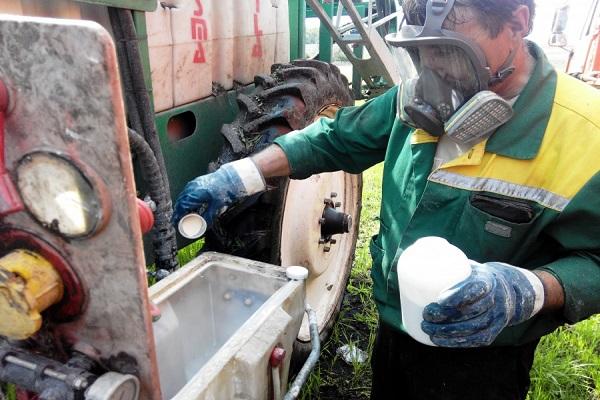
The ready-made solution is fed with the help of pumps into special filling tanks, then delivered to the spraying site. If there are no mechanized means, it is forbidden to prepare the solution, use it on the same day. Do not spill hydraulic fluid.
Instructions for the use of the herbicide
The herbicide is sprayed on the plants on the ground during the massive growth of weeds. For the destruction of carrion can be used "Florax" and "Decembrist" (0.1-0.15 l / ha).
Annual dicotyledonous weeds are recommended to be processed in the phase of 2-6 leaves (at a height of 5-10 cm). Perennials - from the rosette phase to the beginning of stemming.
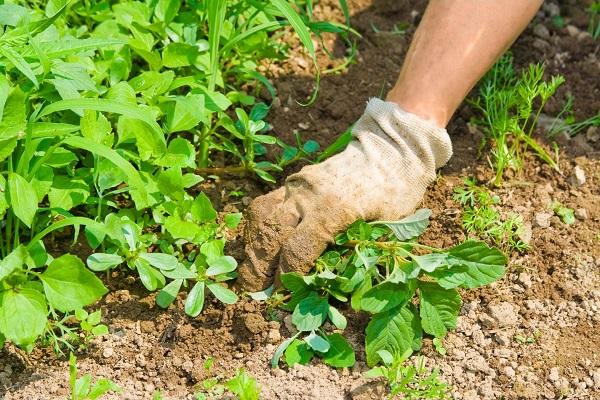
The highest dose is used in case of large weediness, superiority of root-sprout perennials, overgrown grasses (thistle, bedstraw, thistle, chamomile species) before their budding.
The air should warm up from +5 to +25 C. The best is + 8 ... + 25 C. When predicting frost at night, treatment is not recommended.
Safety in use
Work with herbicide is carried out with personal protective equipment. These are overalls, glasses, respirator, hat, shoes, rubber gloves. Also put on oversleeves, aprons. Persons who have passed special instructions on the use of pesticides and first aid in case of poisoning are allowed to be processed.

Drug toxicity
For humans, the substance is moderately hazardous or class 2 toxicity, for bees it is low hazard, class 3 toxicity. Cannot be used in a fish protection area.
Compatibility with other pesticides
"Florax" is combined with other agrochemicals, but a compatibility test must first be carried out. It is used in tank mixtures with fungicides, insecticides.
It is allowed to mix with chemicals where sulfonylureas, dicamba, carfentrazone-ethyl, isoproturon are present.
Mixing with substances containing fenoxaprop-P ethyl, clodinafol-propargyl reduces the effectiveness.
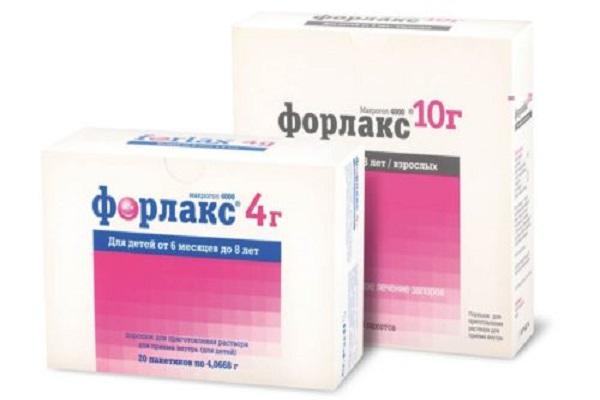
Terms and conditions of storage
Store the herbicide in the package, without opening it, at a temperature of + 5 ... + 25 From 2 years old.
A warehouse is used for storage, where there is no food, fodder, feed, where moisture and sunlight do not penetrate.
Substitutes
Similar imported drugs:
- Asterix, SE;
- Prima, SE;
- "Primavera", SE.
And domestic production:
- "Ballerina";
- Assolyut, MK;
- "Prima Donna", SE.
The chemicals contain active substances - florasulfame and 2,4-D.
